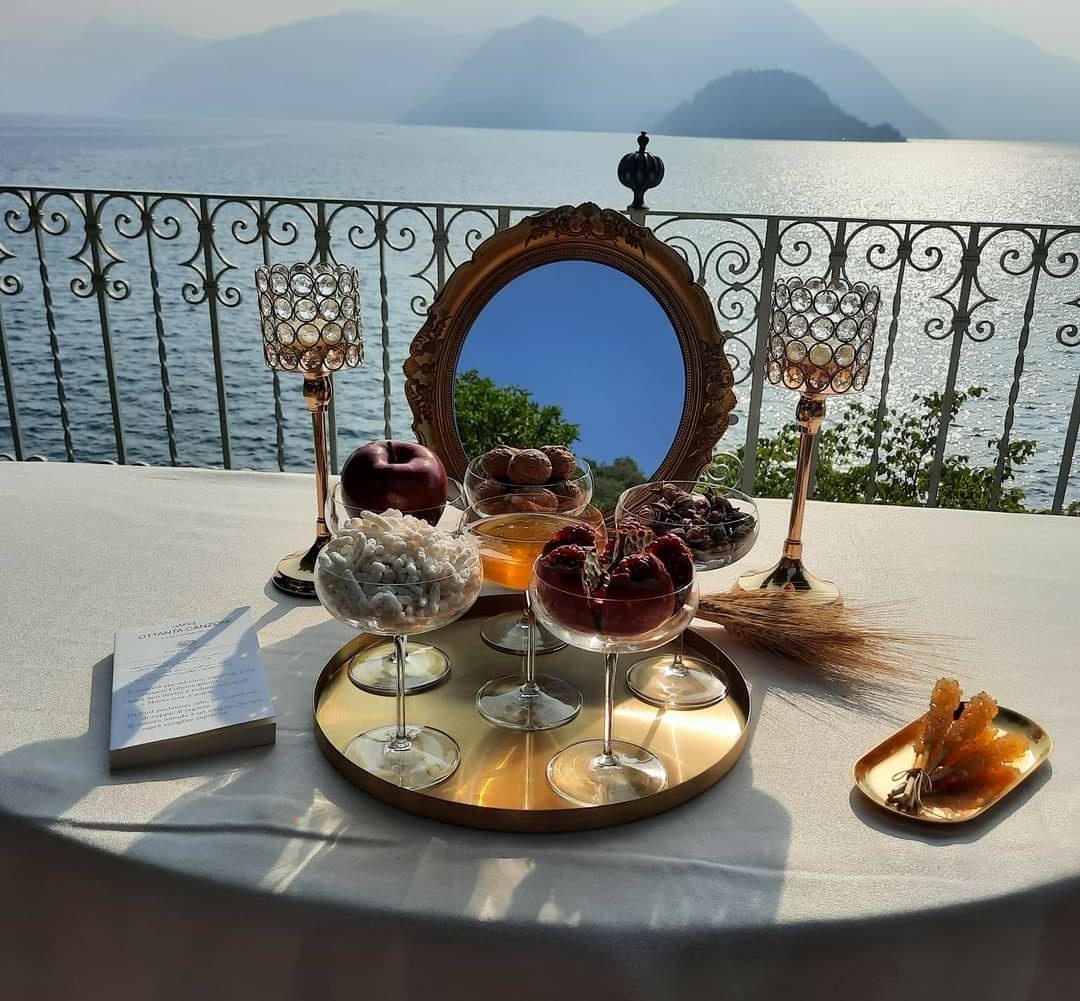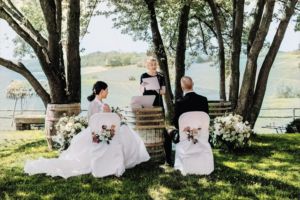Very often, to make your wedding ceremony even more personal and poetic, it is a good idea to add a symbolic rite. But what exactly is a ‘symbolic rite’? A symbolic rite is a series of gestures, actions, that the wedding couple performs during the ceremony, sometimes also involving their groomsmen and bride’s witnesses, and/or loved ones present at the wedding. A symbolic rite is often accompanied by special words, pronounced by the bride and groom themselves or by the celebrant, by musical notes that have special emotional value for the couple, and by symbolic objects that enrich the ceremony with a special meaning and a touch of magic.
Examples of symbolic wedding rite
There are many symbolic rites that you can include in your wedding ceremony. Let us recall just a few of them now and then we will talk about them in more details in the future: the Unity Candle Ceremony, which is performed using candles, the Unity Sand Ceremony, which makes use of sands, sometimes of different colours, to symbolise the diversity and union of he married couple, and the Jumping the Broom, of African-American origin, which sees the bride and groom “leap” over an imaginary threshold symbolised by the broom. In short, there are so many symbolic rituals of different origins with which you can enrich your wedding ceremony.
Symbolic Persian wedding rite
Today, in particular, I want to talk to you about the Persian Ritual Ceremony, and I want to do so for two reasons: the first is to pay homage to a culture and a country, Iran, which is going through a very difficult and painful historical moment, especially for women. The second reason that prompts me to talk to you about this ritual, which sees the wedding banquet table in the foreground, is to emphasise how in every culture, at all latitudes, there are certain elements and certain foods that have a powerful and shared significance, such as, for example, bread and wine.
The Wedding Banquet in the Symbolic Persian Rite
So let’s take a detailed look at how the Persian Ritual Ceremony with its ‘Wedding Banquet’ is organized and what it entails.
As I mentioned, one of the main features of the Persian Ritual Ceremony is the wedding banquet, a richly laid table.
As in other popular Persian traditions, this event has its roots in the ancient Zoroastrian faith (based on the four elements of nature: Earth, Fire, Water, Air) and is therefore present in every Iranian wedding regardless of the bride and groom’s faith. This wedding table is meant to symbolize and wish the bride and groom a life full of joy and happiness.
Every object set on the wedding table has a precise meaning and is a symbol of good luck for this new life together that the bride and groom inaugurate during the wedding ceremony.
The symbology of the wedding banquet
A mirror placed in the center on the table cannot be missing, to bring light and brightness to the future. The mirror is also a symbol of purity and clarity and is placed so that it faces the bride and groom and they can see their own reflected image.
Then we find two candelabra to represent fire and energy; they are set up in pairs, placed on either side of the mirror, one for the bride and one for the groom, to symbolize light and warmth in the bond between bride and groom.
Also on the table are rose buds, a symbol of love, known throughout the world.
We then find a cup of honey, sweets (sugared almonds) and crystallized sugar, often flavored with saffron, so that the bride and groom start their life together in sweetness, drawing on the nectar of happiness every day of their lives together.
Walnuts, a symbol of longevity and a sign of the breadth of the bride and groom’s table, which also includes these fruits, true blessings of nature, cannot be missing.
A few pomegranates and apples are also set, wishing for a joyful future. Pomegranates are in fact believed to be fruits of paradise and apples symbolize the divine creation of mankind. Such fruits, as well as walnuts, symbolize Nature’s blessings.
Then there is a book to symbolize the blessing on the couple; the book can be prose or poetry or a text that has a particular meaning for the couple.
Then there is the ear of wheat, symbolizing the blessing of nature, abundance, and happiness.
There are flowers in abundance to bring freshness and vitality; they are often placed on the table to signify the beauty of the bond between bride and groom and are also used to decorate and beautify the wedding banquet.
An element that decorates and makes the table more beautiful in the Persian Ritual Ceremony is the so-called Termeh, a traditional silk or cloth embroidered with golden thread, handed down through generations, representing family and tradition.
And lastly, wine, which symbolizes love and affection.
On the wedding table, the presence of a goblet of wine is very important. In fact, wine has in many cultures and rituals – from Christian to Jewish to Persian – a strong symbolic component associated with joy, the sharing of happy moments and the celebration of love.
So let us imagine this luxurious banquet set before the bride and groom as a greeting card dedicated to them: may their life together always be full of joy, rich and overflowing with all good and beautiful things!




